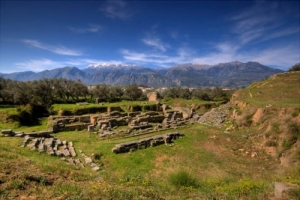Diros Cave
- Published in Peloponnese Attractions
The cave of Diros, is found 10 km from Gytheio and 5 km from the Pyrgos Dirou. Actually there are three caves, the Alepotrypa, Katafigi and Glyfada. This is a unique experience traveling barely a subterranean river length 1,600 m. The magic of the color, and the beautiful shapes, formed by the stalactites and stalagmites makes a unique spectacle. After the ongoing research at the cave of Diros to date, the total length reaches 6.500 meters and is still unknown the final length.










